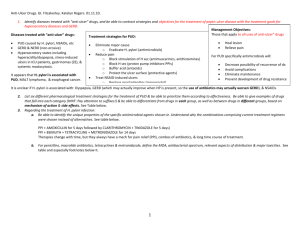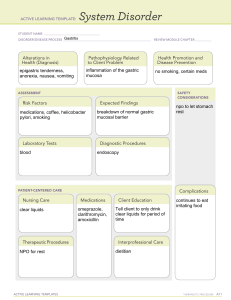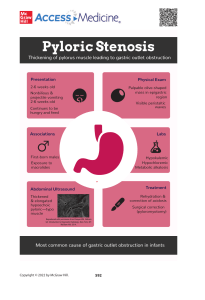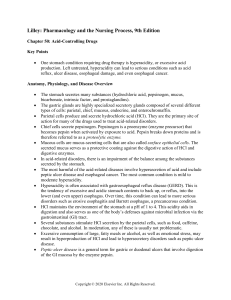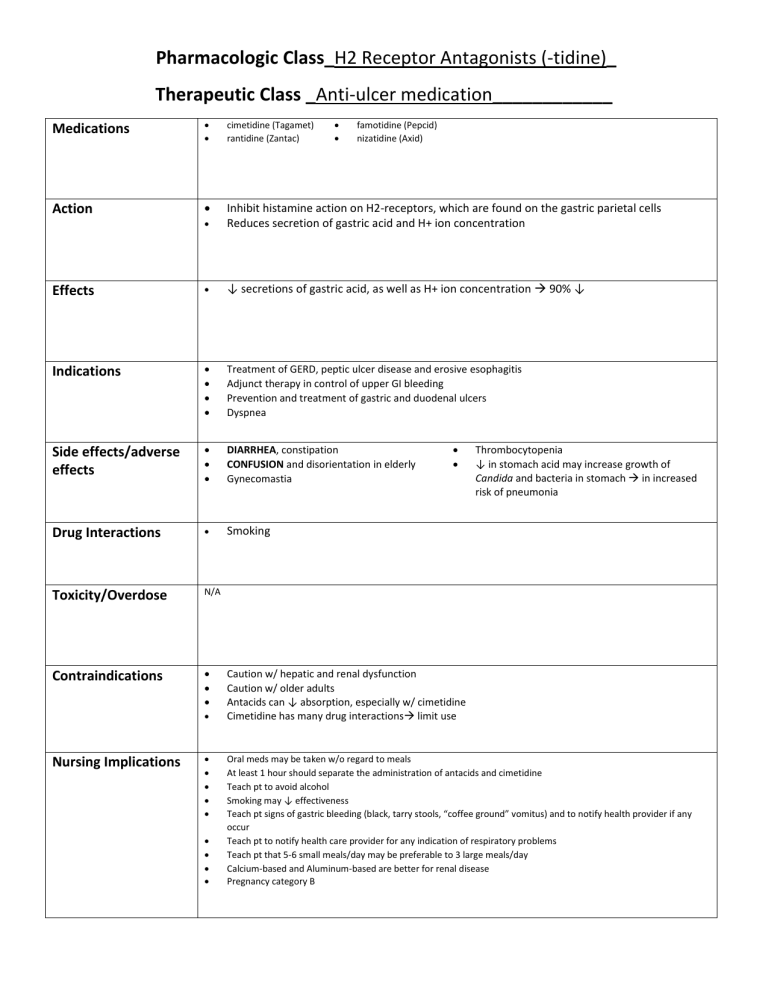
Pharmacologic Class_H2 Receptor Antagonists (-tidine)_ Therapeutic Class _Anti-ulcer medication____________ Medications cimetidine (Tagamet) rantidine (Zantac) Action Inhibit histamine action on H2-receptors, which are found on the gastric parietal cells Reduces secretion of gastric acid and H+ ion concentration Effects ↓ secretions of gastric acid, as well as H+ ion concentration 90% ↓ Indications Treatment of GERD, peptic ulcer disease and erosive esophagitis Adjunct therapy in control of upper GI bleeding Prevention and treatment of gastric and duodenal ulcers Dyspnea Side effects/adverse effects DIARRHEA, constipation CONFUSION and disorientation in elderly Gynecomastia Drug Interactions Smoking Toxicity/Overdose N/A Contraindications Nursing Implications famotidine (Pepcid) nizatidine (Axid) Thrombocytopenia ↓ in stomach acid may increase growth of Candida and bacteria in stomach in increased risk of pneumonia Caution w/ hepatic and renal dysfunction Caution w/ older adults Antacids can ↓ absorption, especially w/ cimetidine Cimetidine has many drug interactions limit use Oral meds may be taken w/o regard to meals At least 1 hour should separate the administration of antacids and cimetidine Teach pt to avoid alcohol Smoking may ↓ effectiveness Teach pt signs of gastric bleeding (black, tarry stools, “coffee ground” vomitus) and to notify health provider if any occur Teach pt to notify health care provider for any indication of respiratory problems Teach pt that 5-6 small meals/day may be preferable to 3 large meals/day Calcium-based and Aluminum-based are better for renal disease Pregnancy category B



